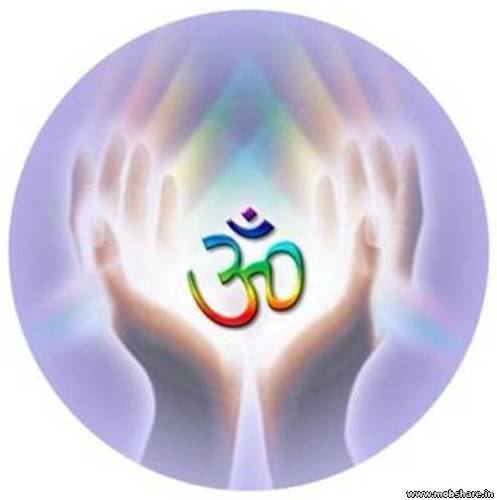Saturday, February 27, 2010
Happy Holi today and Wish Hindus worldwide !!!
By Pakistan Hindu Post (PHP)
In Sindh, the main function will be held at Sawami Narayan Mandir situated on MA Jinnah Road in Karachi and at the Lohano Community Hall in district Sangher.
In Lahore, the Hindus will gather at the Krishna Mandir on Ravi Road to celebrate the day.
The history: The celebration of Holi is very ancient in its origin. By its very origin, Holi celebrates an ultimate triumph of the ‘good’ over the ‘evil’. Many colours associated with Holi are said to be the face of celebrations.
There are two different stories behind the Holi festival.
The word ‘Holi’ means ‘burning’ in the Indian language. The reference was found only in ancient Indian legend of Hiranyakashipu, to whom the celebration of Holi is attributed.
Years back in the pre-Christian era, there lived a demon king named Hiranyakashipu in ancient India. He wanted to avenge the death of his younger brother. His brother, also a demon, had been killed by Lord Vishnu, one of the supreme trios, monitoring the life and death in the universe. To take on Vishnu, the tyrant king wanted to become the king of the heaven, earth and the underworld.
He performed severe penance and prayers for many years to gain enough power. Finally, he was granted a boon. Powered by the boon, Hiranyakshipu thought he had become invincible. Arrogant, he ordered all in his kingdom to worship him, instead of god. The demon king, however, had a very young son, Prahalad. He was an ardent devotee of Vishnu. Despite his father’s order, Prahalad continued to pray to Vishnu.
So the demon king decided to kill his son. He asked the favour of his sister Holika who, because of a boon, was immune to fire. They planned that Prahalad would be burnt to death. A pyre was lit up and Holika sat on it, clutching Prahalad. Yet, at the end Prahalad emerged unscathed by the fire, and Holika, the demon, was burnt to ashes.
The earnest devotion and complete submission to Lord Vishnu saved the young Prahlad. Thus was the triumph of Prahlad, the representative of good spirits, and the defeat of Holika. Later, even the demon king Hiranyakashipu was killed by Lord Vishnu.
The second story behind the Holi festival is of Krishna who was a reincarnation of Vishnu himself. It was Krishna, or, Krishan, the king of the ancient city of Dwarka, who popularised the tradition of Holi. The origin of the colourful and frolicking tone of Holi lied in the boyhood of Krishna. It all came up as part of his pranks; he used to play with his mates of Gokul and Vrindavan situated in north India.
Krishna would play pranks by drenching the village girls called gopi’s with water and colours. At first it offended the girls, but they were so fond of this mischievous boy that soon their anger melted away. And, it did not take long for other boys to join in, making it a popular sport in the village.
Later, as Krishna grew up, the play assumed a new dimension. It added more colours to Krishna’s legendary love life. The legend of Krishna’s courtship with Radha and playing pranks with the gopis. The girls in the Gokul village were mostly milkmaids, and, hence locally known as gopis.
The same tradition had emerged through the ages, turning it into a community festival of the masses.
The Holi play of Krishna was documented in hundreds of ancient paintings, murals, sculptures and scriptures found across the subcontinent.
In Sindh, the main function will be held at Sawami Narayan Mandir situated on MA Jinnah Road in Karachi and at the Lohano Community Hall in district Sangher.
In Lahore, the Hindus will gather at the Krishna Mandir on Ravi Road to celebrate the day.
The history: The celebration of Holi is very ancient in its origin. By its very origin, Holi celebrates an ultimate triumph of the ‘good’ over the ‘evil’. Many colours associated with Holi are said to be the face of celebrations.
There are two different stories behind the Holi festival.
The word ‘Holi’ means ‘burning’ in the Indian language. The reference was found only in ancient Indian legend of Hiranyakashipu, to whom the celebration of Holi is attributed.
Years back in the pre-Christian era, there lived a demon king named Hiranyakashipu in ancient India. He wanted to avenge the death of his younger brother. His brother, also a demon, had been killed by Lord Vishnu, one of the supreme trios, monitoring the life and death in the universe. To take on Vishnu, the tyrant king wanted to become the king of the heaven, earth and the underworld.
He performed severe penance and prayers for many years to gain enough power. Finally, he was granted a boon. Powered by the boon, Hiranyakshipu thought he had become invincible. Arrogant, he ordered all in his kingdom to worship him, instead of god. The demon king, however, had a very young son, Prahalad. He was an ardent devotee of Vishnu. Despite his father’s order, Prahalad continued to pray to Vishnu.
So the demon king decided to kill his son. He asked the favour of his sister Holika who, because of a boon, was immune to fire. They planned that Prahalad would be burnt to death. A pyre was lit up and Holika sat on it, clutching Prahalad. Yet, at the end Prahalad emerged unscathed by the fire, and Holika, the demon, was burnt to ashes.
The earnest devotion and complete submission to Lord Vishnu saved the young Prahlad. Thus was the triumph of Prahlad, the representative of good spirits, and the defeat of Holika. Later, even the demon king Hiranyakashipu was killed by Lord Vishnu.
The second story behind the Holi festival is of Krishna who was a reincarnation of Vishnu himself. It was Krishna, or, Krishan, the king of the ancient city of Dwarka, who popularised the tradition of Holi. The origin of the colourful and frolicking tone of Holi lied in the boyhood of Krishna. It all came up as part of his pranks; he used to play with his mates of Gokul and Vrindavan situated in north India.
Krishna would play pranks by drenching the village girls called gopi’s with water and colours. At first it offended the girls, but they were so fond of this mischievous boy that soon their anger melted away. And, it did not take long for other boys to join in, making it a popular sport in the village.
Later, as Krishna grew up, the play assumed a new dimension. It added more colours to Krishna’s legendary love life. The legend of Krishna’s courtship with Radha and playing pranks with the gopis. The girls in the Gokul village were mostly milkmaids, and, hence locally known as gopis.
The same tradition had emerged through the ages, turning it into a community festival of the masses.
The Holi play of Krishna was documented in hundreds of ancient paintings, murals, sculptures and scriptures found across the subcontinent.
Subscribe to:
Post Comments (Atom)













No comments:
Post a Comment